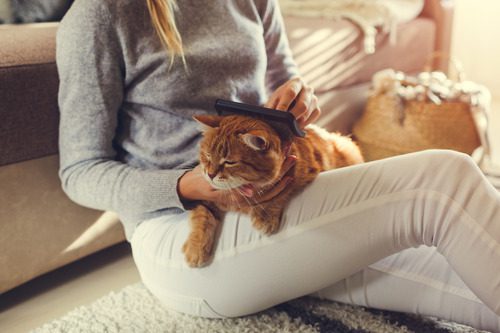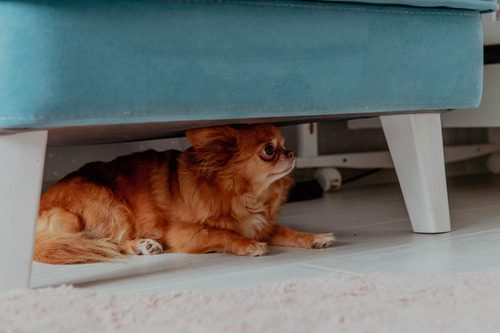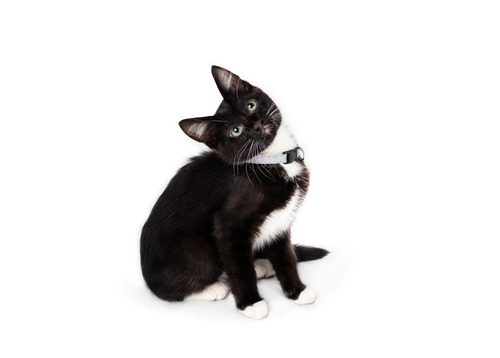Grooming Tips for Long-Haired Cats at Home
Caring for a long-haired cat means more than just appreciating their beautiful coat—it involves regular grooming to prevent tangles, manage shedding, and support healthy skin. While it might seem like a challenge at first, grooming long haired cats at home can be a manageable and even rewarding experience with the right approach. Whether you’re dealing with mats, loose fur, or seasonal shedding, this blog will guide you through practical, cat-friendly grooming techniques that make the process easier for you and more comfortable for your cat. Keep reading to learn what tools you’ll need, how to create a stress-free grooming routine, and when it’s time to reach out for professional help.

Why Grooming Long Haired Cats Matters
Long-haired breeds such as Persians, Maine Coons, and Ragdolls are prone to matting, hairballs, and skin irritation if their coat isn’t managed regularly. Grooming long haired cats helps prevent these issues by removing dead hair, distributing natural oils, and giving you a chance to check their skin for signs of problems like fleas or wounds.
It also improves your cat’s comfort and can reduce hairballs, since fewer loose hairs end up being ingested during self-grooming. A well-maintained coat reflects your cat’s overall health, and consistent grooming helps you stay ahead of any potential issues. Plus, regular handling during grooming sessions can strengthen the bond between you and your cat.
Tools You’ll Need for Grooming Long Haired Cats
Before you start grooming long haired cats, gather a few essentials to make the process smoother and more effective. Not all tools are created equal—choosing the right ones can make a significant difference.
Brushes and Combs
A slicker brush is great for removing tangles and loose fur. A wide-tooth comb can help you work through thicker parts of your cat’s coat, while a finer comb is useful for more delicate areas like behind the ears or under the legs. Always brush gently to avoid pulling the hair or irritating the skin.
Deshedding Tools
Deshedding tools like the Furminator can reduce the amount of loose undercoat hair and minimize shedding. Use this tool sparingly—no more than once or twice a week—to avoid overgrooming.
Scissors or Mat Splitters
If your cat tends to get mats, especially around the armpits or belly, having a pair of blunt-ended grooming scissors or a mat splitter can be useful. However, be cautious when using these tools to avoid accidentally cutting the skin.
Creating a Comfortable Grooming Routine
Grooming long haired cats requires consistency, patience, and a calm environment. Cats are sensitive to stress, so creating a routine that feels predictable and non-threatening will go a long way.
Start Slowly
If your cat isn’t used to grooming, ease them into it. Start with short sessions—just a few minutes—and gradually work your way up as your cat becomes more comfortable. Always reward your cat with treats and gentle praise.
Choose the Right Time
Pick a time when your cat is relaxed, such as after a meal or a nap. Avoid grooming when your cat is overly energetic or agitated.
Use Gentle Restraint
If needed, use a towel to gently wrap your cat or place them in your lap with a calm voice and soft strokes. The goal is to help your cat feel secure without creating tension or fear.
Handling Mats and Tangles Safely
Mats can develop quickly in long-haired cats, especially if grooming is skipped. Grooming long haired cats regularly helps prevent mats from forming, but even with a routine, tangles can happen.
Identify Matted Areas
Check common mat-prone areas like the chest, belly, and behind the ears. Use your fingers to feel for small clumps before they become tightly knotted.
Work Through Tangles Carefully
Start by using a detangling spray designed for cats, then gently separate the hair with your fingers or a wide-tooth comb. If the mat is too tight, use grooming scissors with extreme caution or consult a professional groomer.
Avoid Shaving at Home
Shaving may seem like a quick fix for mats, but it can easily lead to injury. If the mats are extensive or located in sensitive areas, it’s safer to seek professional grooming services.
Bathing Long Haired Cats: When and How
Most cats don’t require frequent bathing, but grooming long haired cats occasionally includes a bath—especially if their coat becomes greasy or soiled.
When to Bathe
If your cat gets into something sticky, has a medical condition that affects their coat, or starts smelling unusually strong, a bath may be necessary. Otherwise, brushing often is usually sufficient.
Bathing Tips
Use a gentle, cat-safe shampoo and lukewarm water. Place a towel or rubber mat in the sink or tub to prevent slipping. Rinse thoroughly to remove all soap residue, and dry your cat with a soft towel. Avoid using a hairdryer unless your cat is used to the sound and sensation.
Grooming Long Haired Cats During Shedding Season
Long-haired cats typically shed more during spring and fall. This period requires extra grooming to manage the increased hair and reduce the risk of mats and hairballs.
Increase Brushing Frequency
Brush your cat daily during shedding season to remove loose fur and reduce the amount that ends up on your furniture—or in your cat’s digestive system.
Keep an Eye on Hairballs
More shedding often leads to more hairballs. Brushing regularly can minimize this, but if your cat is coughing up hairballs frequently, contact your veterinarian for advice.
Is It Time to Call a Professional Groomer or Your Veterinarian?
Sometimes, grooming long haired cats at home isn’t enough. If your cat is heavily matted, shows signs of skin irritation, or becomes aggressive during grooming, it may be time to call in a professional.
Your veterinarian or professional groomer is experienced in handling anxious or senior cats and can provide thorough grooming in a safe environment. If you notice anything unusual on your cat’s skin or coat—such as redness, scabs, bald patches, or signs of fleas—schedule a veterinary exam to rule out underlying health issues.
Supporting a Healthy Coat Through Routine and Care
Consistency is the key to success when grooming long haired cats. Creating a regular grooming schedule, using the right tools, and paying attention to your cat’s behavior can make grooming a more positive experience for you both. Over time, you’ll become more confident and better equipped to care for your cat’s beautiful coat. For personalized advice or help with grooming long haired cats, call Brown Veterinary Hospital in Terre Haute at 812-645-0715 or request an appointment online. Our team is here to support your cat’s health and comfort through every stage of life.
Recent Posts
About Brown Veterinary Hospital
We are here to serve as your partner in keeping your four-legged family member healthy, ensuring you have all the tools you need to provide them with a lifetime of outstanding care. Our animal hospital in Terre Haute offers a full range of services to nurture and extend your pet’s life, from wellness and preventative care to critical care, exotic pet care, and dermatology.





